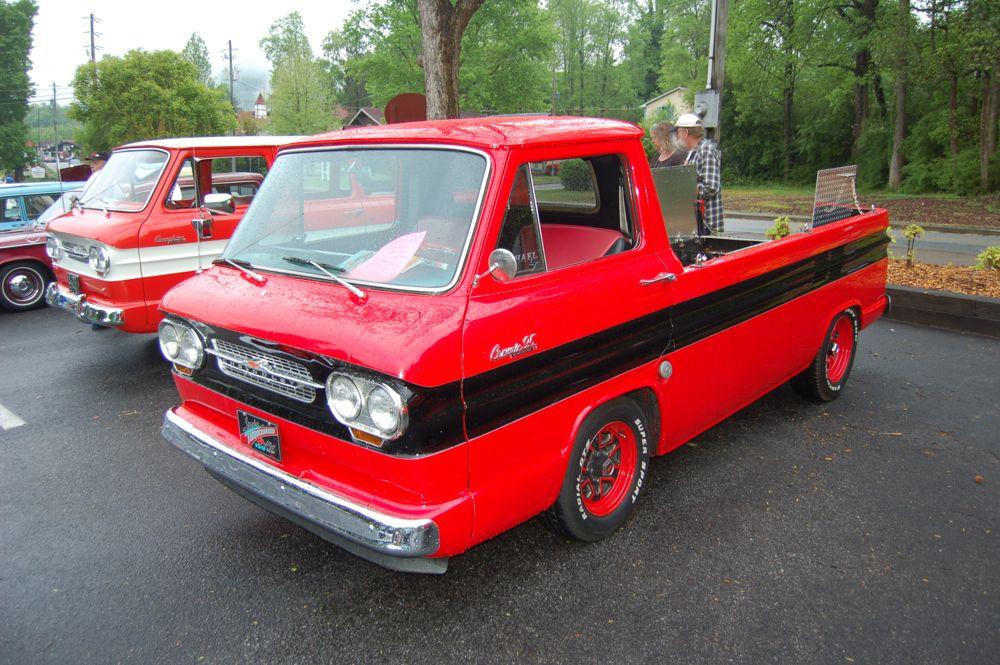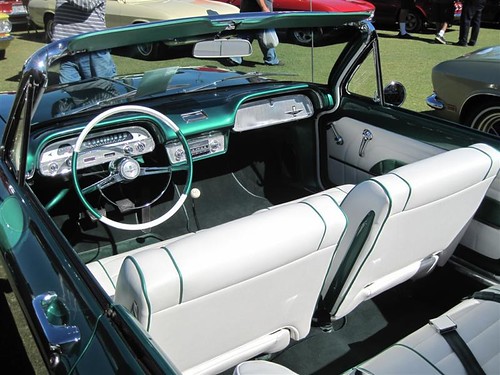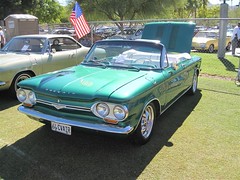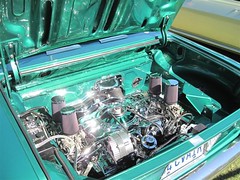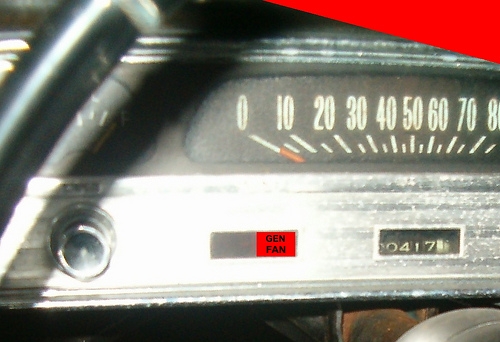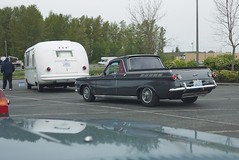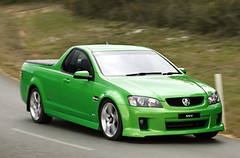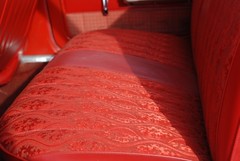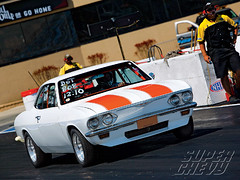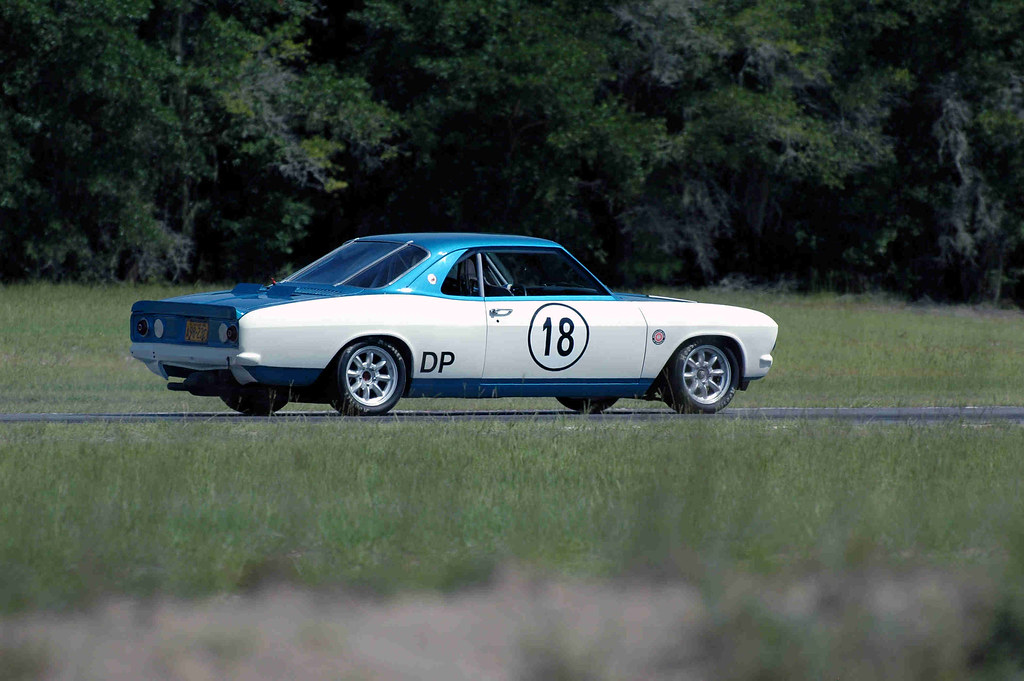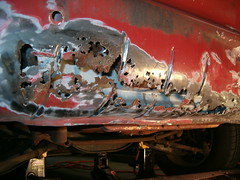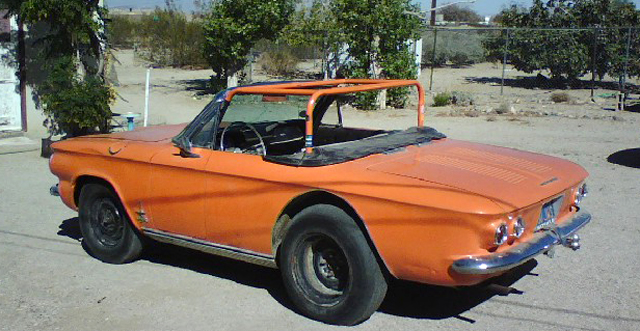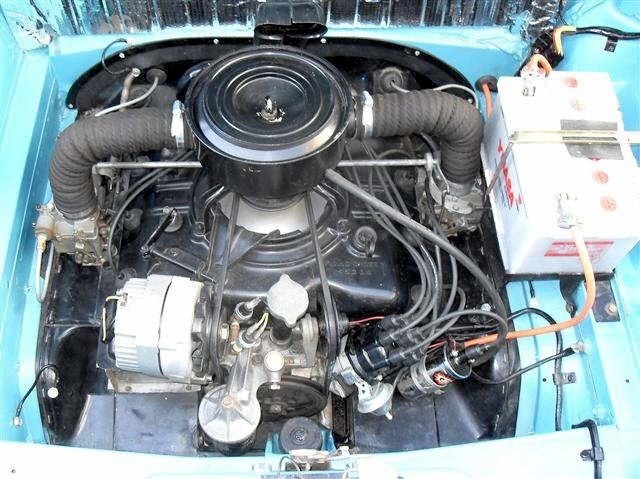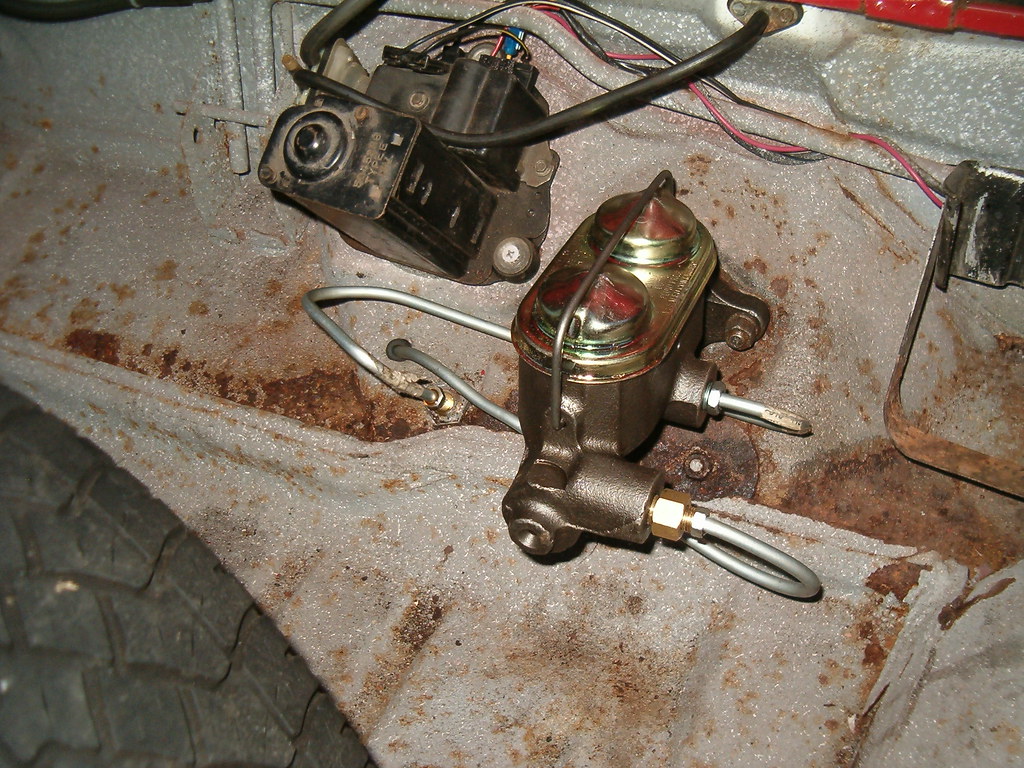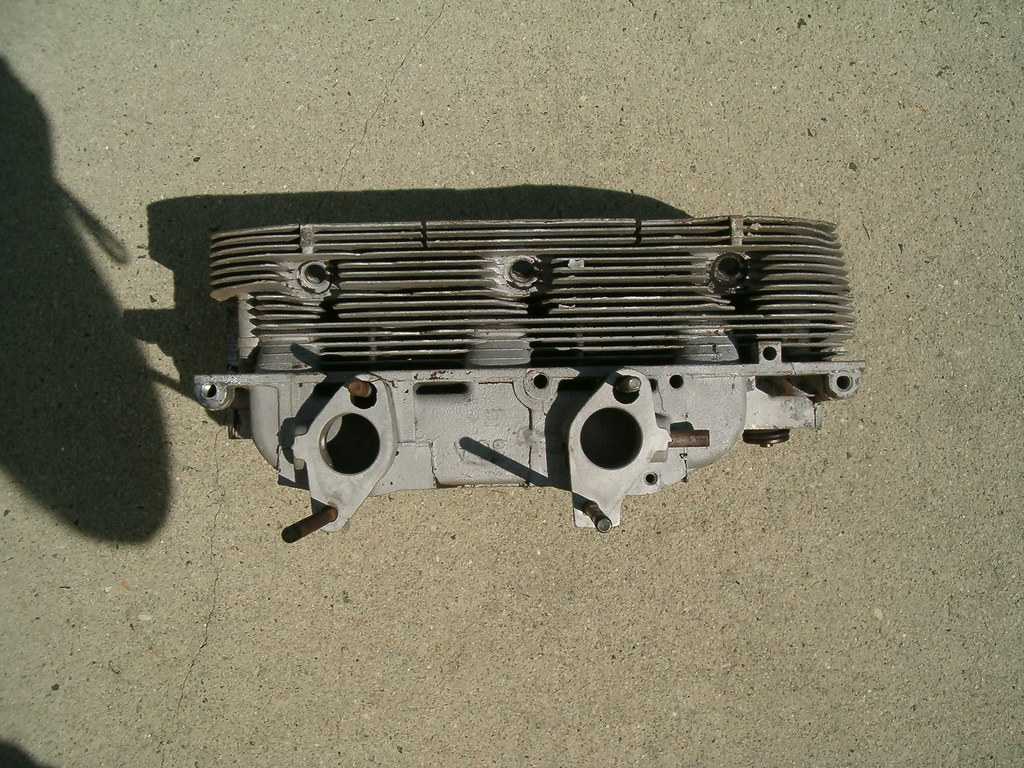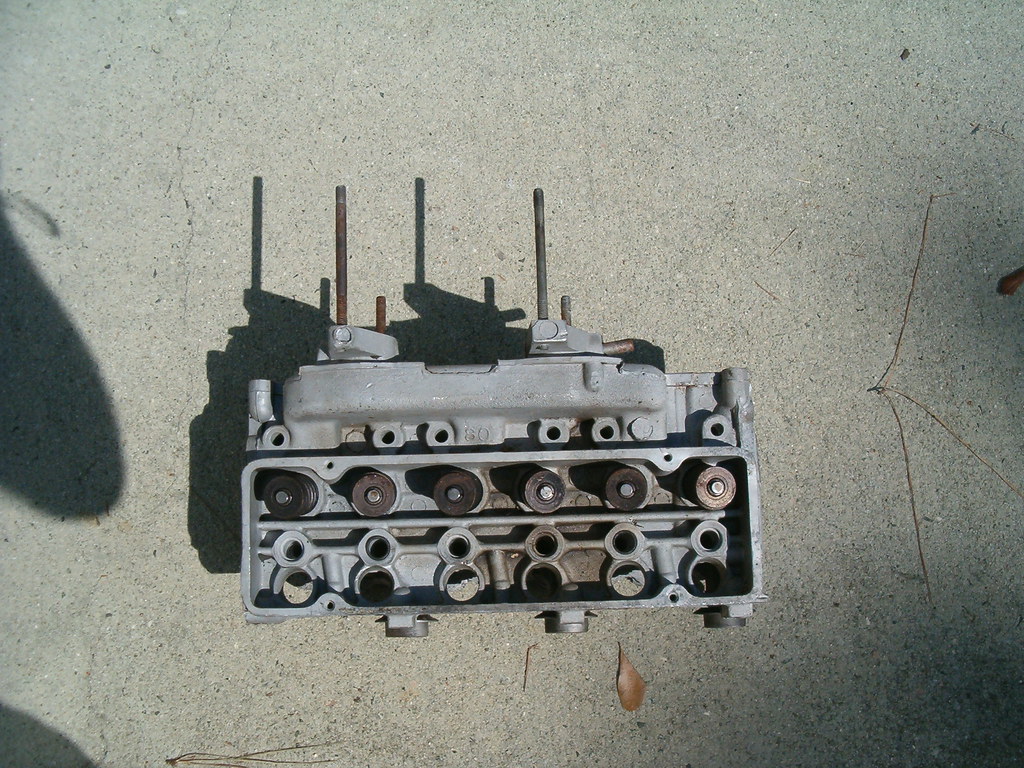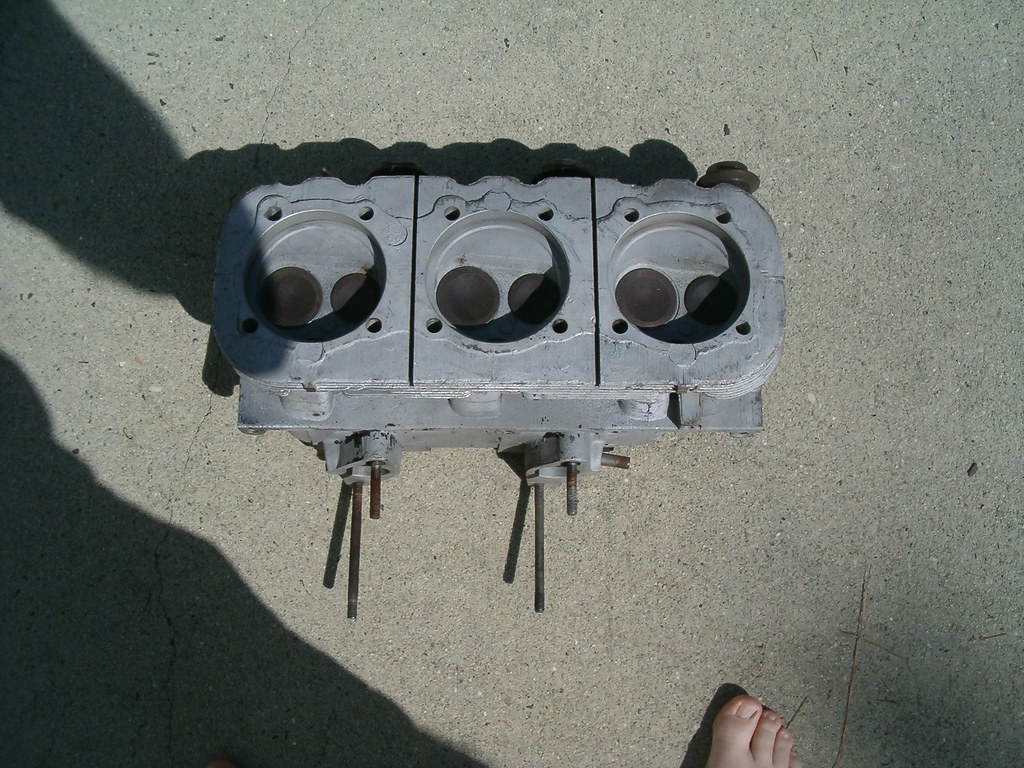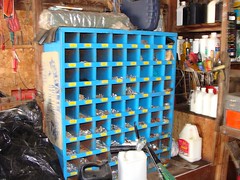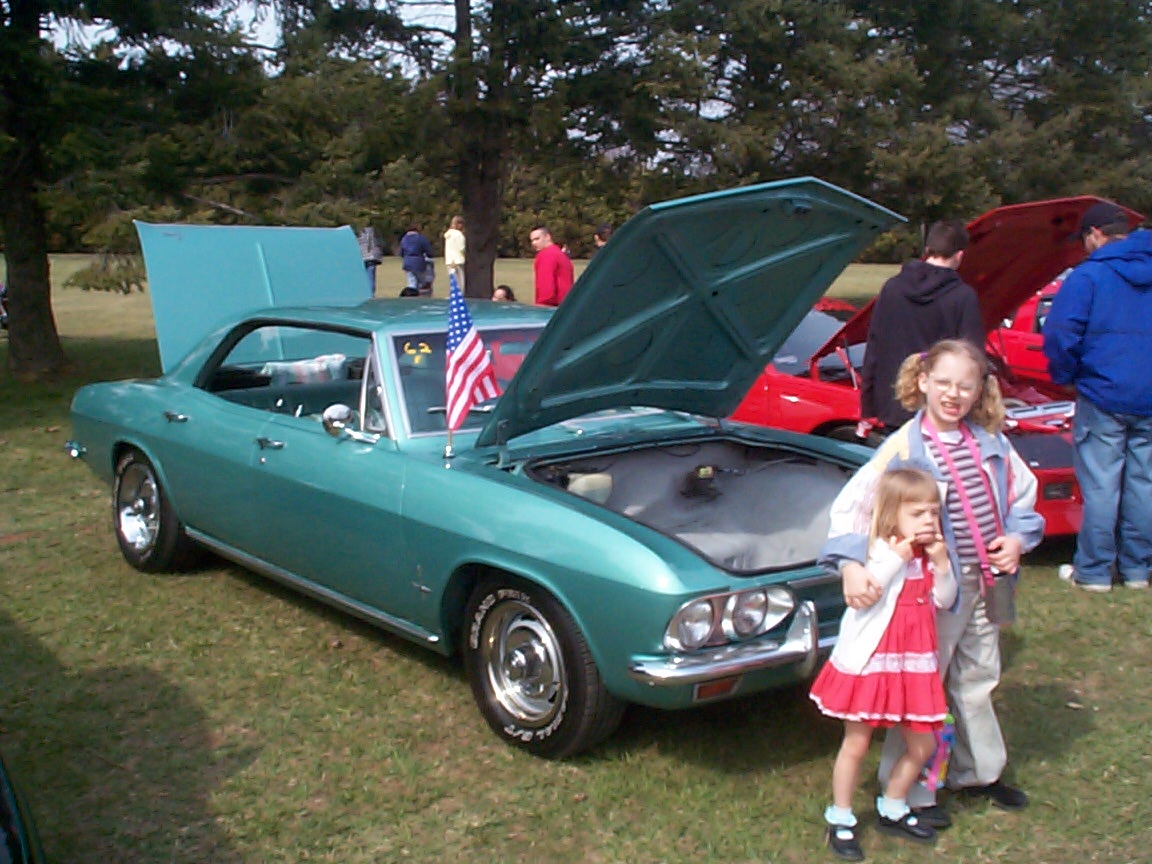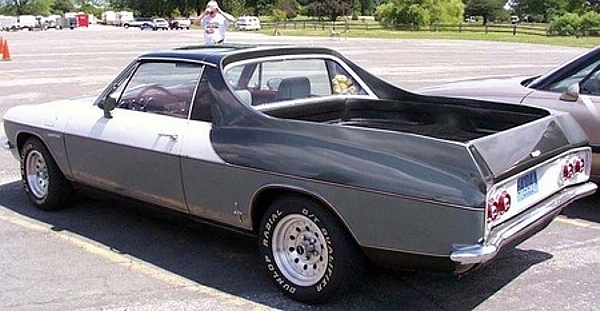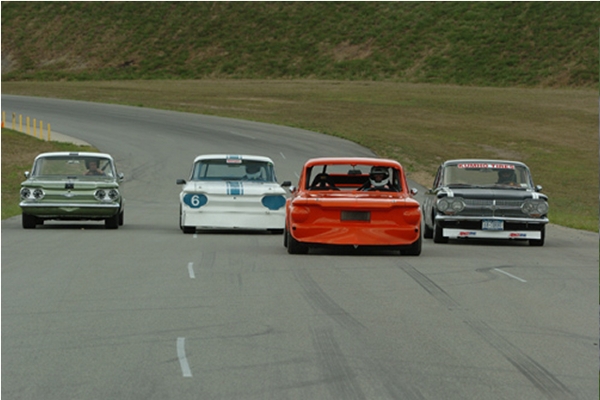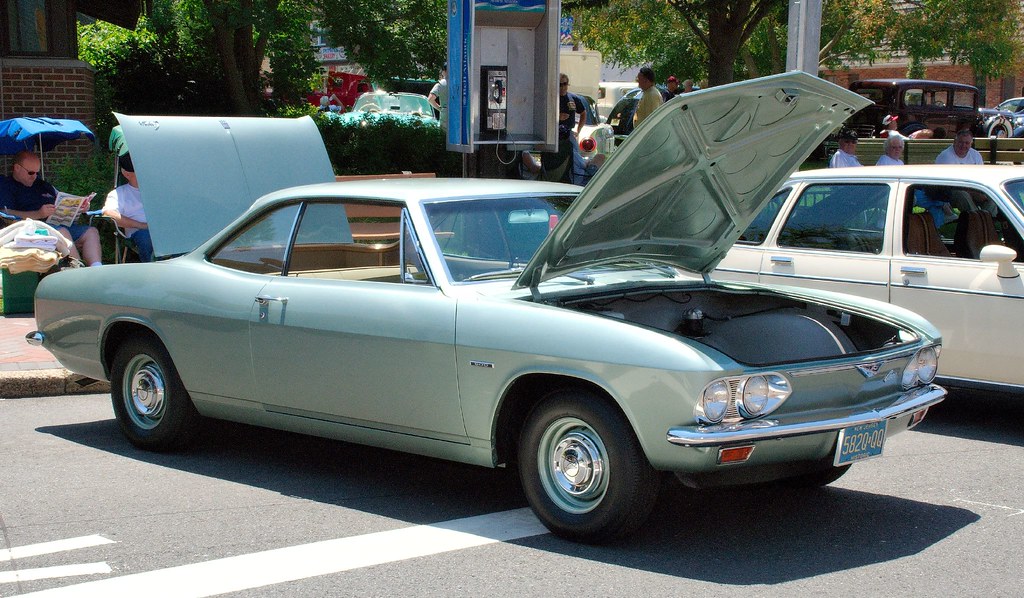First story from yesterday. While filling Lucy’s gas tank with fuel, the driver on the other side of the island asked me if I was a doctor. Rather than give a snappy reply like, “No, but I did stay at a Holiday Inn Express,” I just said, “No.”
“You must be an engineer then,” he said.
“Yes I am, and how’d you guess?” I shockingly replied.
Pointing to Lucy, he answered, “You must be really smart. It takes a smart person to keep an old car like that on the road.”
He was full of questions after that, and I thoroughly enjoyed answering them. It’s so much fun to chat with people about Corvairs.
Second story. On my drive after work to pick up Victoria from

her lacrosse game, Lucy’s GEN-FAN light came on. I immediately shut off the engine and coasted to a stop well off the highway. As I walked to the back of the car, I thought how ironic it was that a guy had just posted that day on the CorvairCenter forum his adventure with his first fanbelt failure. This thought came to mind since I fully expected that opening the engine lid would expose a dangling, ragged belt. Thankfully, I was wrong. The fanbelt was intact and the generator pulley was still under tension. A quick visual check of the wiring indicated all was well there. It was only after I jiggled one of the wires going to the generator that I found the problem. The wire had broken beneath the insulator of the ring-tongue terminal. To fix it, I first grabbed my multi-tool and a tie-wrap from the toolbag

in the trunk. Then I stripped off a small length of insulation from the broken end of the wire, slid the insulator off the terminal and slid it over the wire end and up a little. After laying the exposed wire end on top of the open end of the terminal, I slid the insulator back down the wire and over the terminal end thus capturing the wire. The tie-wrap installed tightly around the insulator ensured the repair would last for at least until I got Lucy home.
